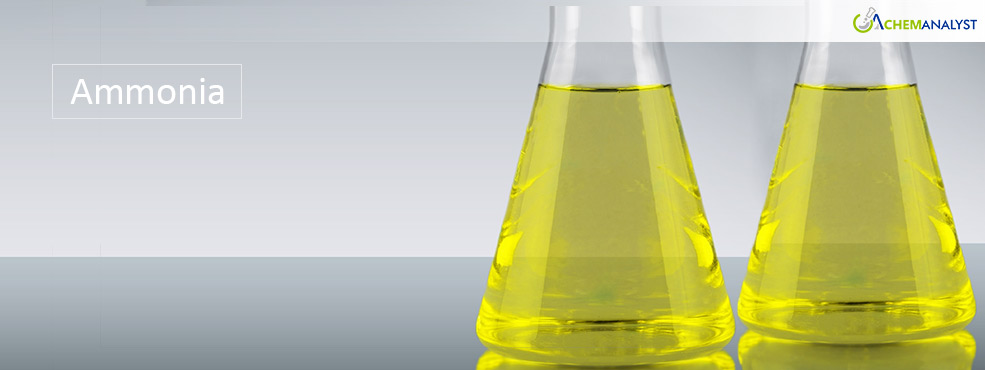Global Ammonia Prices Under Pressure from Oversupply and Muted Trading Activity
- 21-Feb-2025 6:30 PM
- Journalist: Kim Chul Son
The global Ammonia market experienced a subdued performance during the first half of February 2025, with prices remaining soft to stable across most regions. This sluggish market sentiment is primarily attributed to a narrowing gap between supply and demand, leading to muted trading activity. Insights from various market participants indicate that the international Ammonia market remains well-supplied, with increasing downward price pressure evident across the global landscape.
In the Asian market, Ammonia prices witnessed a noticeable decline during the review period. This downward trend can be attributed to several contributing factors, including reduced freight costs and a more balanced supply demand dynamic. A significant driver of this trend has been the easing of port congestion in China—a major exporter—following the conclusion of the Lunar New Year holidays. Market data reveals that cargo volumes in North Asia declined post-holiday, allowing for smoother cargo inflows. According to industry reports, vessel capacity waiting at anchorages in North Asia has dropped by more than 50% from its peak in January, substantially reducing logistical bottlenecks at Chinese and Korean ports. On the demand side, purchasing activity has remained subdued, particularly within the downstream fertilizer sector, where buyers are adopting a cautious procurement approach. The combination of improved supply conditions and weak demand has created a more balanced market environment, applying further downward pressure on Ammonia prices.
Similarly, in the Middle East, prices have continued to trend downward, largely due to an oversupplied market. Major producers, including Saudi Arabia’s SABIC Agri-Nutrients and Ma’aden, have prioritized fulfilling long-term contractual obligations, with no spot sales reported for 2025 thus far. Although natural gas prices have also seen a decline, the impact on Ammonia pricing has been limited, as current inventory levels are sufficient to meet existing demand. Market participants expect this oversupply situation to persist throughout the quarter, likely to force suppliers to reduce prices further and seek broader market opportunities to manage surplus stock. This scenario underscores the delicate balance between long-term supply commitments and fluctuating market demand, both of which continue to shape Ammonia price dynamics globally.
Similarly, the European Ammonia market also exhibited a soft to stable trend during the initial half of February 2025. On the demand front, purchasing activity remained subdued, reflecting weak market sentiment and limited buying interest from downstream sectors.
Additionally, the recent easing of Natural Gas prices, following previous significant hikes, has contributed to a decline in Ammonia production costs. As Natural Gas is a key feedstock for Ammonia production, this reduction in input costs has further intensified downward pressure on market prices. With lower production expenses and persistent demand weakness, the European Ammonia market continues to face bearish conditions, contributing to the overall softness observed in global pricing trends.
As per ChemAnalyst it is anticipated that the prices of Ammonia may continue to decline in the forthcoming days owing to faded seasonal demand and declining feedstock prices.



